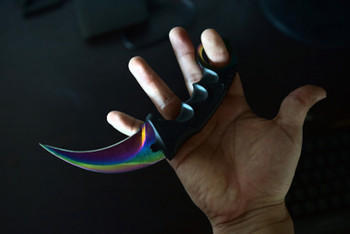4 Shoulder Exercises to Build Strength for the Upcoming Hunting Season
Posted by Clayton on Jan 12th 2017
You’re in an ideal position. You raise your weapon ready to fire when you get a good shot. The deer disappears and reappears, making a clean shot difficult. This goes on for five, ten, fifteen minutes. The buck stands still momentarily but, after all the exertion of getting to your blind, your arms are too tired to hold your weapon steady for that length of time. The buck leaves, and you’ve missed the kill.
This is a problem for too many hunters: Your shoulders can’t sustain holding your rifle or bow steady for a long time. Whether you’re firing the popular Remington 700, drawing the Diamond Infinite Edge compound bow, or using a tactical folding blade to gut and skin your kill, strong shoulder muscles are critical to a successful hunt.
What Is the Shoulder?
The shoulder joint is the most versatile joint in your body. You can swing your arm high and low and back and forth, you can throw a ball or a punch in several ways, and you can grip an amazing amount of weight against your body or give somebody “the elbow.”
The shoulder joint consists of a small shallow socket at the end of your shoulder blade (scapula) into which fits the ball-like head of your upper arm (humerus), which is larger than the socket, like a golf ball on a tee. In fact, only about one-third of the ball contacts the socket at any one time. The socket is made a bit wider and deeper by a flexible rim of cartilage that runs around its edge.
To allow the variety of movements you can do, it takes the shallowness of this ball and socket partnership, as well as seven muscles connecting the humerus to the scapula.
Four of those seven muscles and their tendons enable movements, but an equally important job is to make sure the ball stays in the socket. Together, these are called the rotator cuff. For hunting, the rotator cuff is one of the two most important muscle groups; the other group is the deltoids.
Warmup
Whatever moves you do to strengthen any muscles, start with a warm-up exercise. For the rotator cuff and deltoids, try this:
- Stand in an open doorway, and raise your arms to the side with your elbows bent up 90 degrees, so your elbows and the flat of your palms are on the door jamb.
- Keeping your back straight, lean forward through the doorway until you feel a gentle stretch at the front of your shoulders. Hold this stretch for about 30 seconds, and return to a relaxed position. Do three repetitions.
Two Exercises for the Rotator Cuff
The rotator cuff consists of four muscles: supraspinatus, infraspinatus, subscapularis, and teres minor, as shown in the illustration. Here are two ways to strengthen these muscles; there are other ways as well.
In all the exercises described below, if a dumbbell is required, start with a relatively light one and add weight as your strength increases. A good way to start with a light weight is to use the hunting knife you will carry with you.
Do each sequence ten times, rest for a count of five, and repeat the sequence three times, two to three times a day. As your strength increases, you can increase the repetitions.
#1 - External rotation
- Lie on one side with your elbow bent to 90 degrees and resting on your side. When at rest in this position, your forearm will fall across your abdomen.
- With the dumbbell in your hand, slowly rotate your forearm toward the ceiling, and, at the top of the rotation, hold that position for a count of five.
- Now relax your arm for a count of three, and repeat the rotation.
Repeat this entire exercise lying on your other side.
#2 - Extension
- Stand with your knees slightly bent and your back straight, but bent slightly forward.
- With a dumbbell in each hand, raise your arms to the side while squeezing together your shoulder blades. Don’t lock your elbows.
- Hold the extended position for a count of five, and relax.
Repeat as directed above.
Two Exercises for the Deltoids
The deltoids are three parts of a single deltoid muscle, as shown in the illustration: the anterior, the lateral or middle, and the posterior deltoid.
#1 - Abduction
- Stand with one side near a wall.
- With your back and elbow straight, press the back of your hand against the wall.
- Hold for a count of five, and relax for a count of three.
- Repeat as directed above.
#2 - Elevation
- Lie on your back with your arms at your side and a dumbbell in your hand.
- Keeping your elbow straight, slowly raise your arm up over your head and slowly return it to your side.
You can do both arms simultaneously, but one at a time may be more comfortable.
Repeat as directed above.
The Message
You can hunt in whatever condition you find yourself. However, hunting is a rigorous activity and, if you desire a truly satisfying experience, you need to be in peak physical condition. Strong legs, a strong abdomen, and a strong back are all important, but the most important for effective use of your weapon is the strength of your shoulders.

